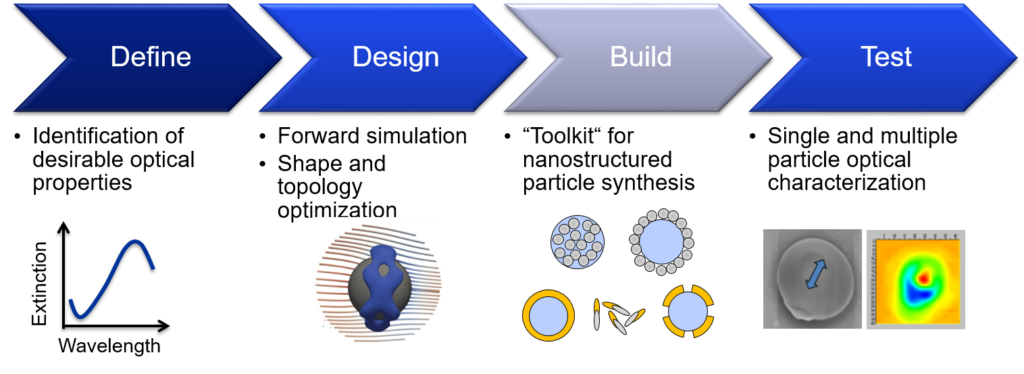Particle-based optical materials
Particle-based optical material design – an interdisciplinary approach
Small particles are exploited for their optical properties in a vast array of applications and products. For example, particles of pigments and dyes are applied extensively in paint, inks, plastics, textiles and cosmetics. Novel applications in the field of energy technology (passive heat reflectors, photovoltaics) and medicine (diagnostic or therapeutic agents) show the immense value of optical particles to contribute significantly to important technological solutions. In many of these application areas, multiple features of the particles (size, shape, material distribution) can be on the nanoscale, a fact which is often fundamentally important to their desirable properties. With the broad range of product areas, future development of new optical materials will require an intimate understanding of this microstructure‐function relationship in order to improve performance, cost efficiency, environmental safety and sustainability. In order to meet these demands there needs to be a shift from materials development through empirical experiments towards a process chain linking theoretical design to the practical realization of application‐optimized particles:
To make this possible, researchers are developing, on the one hand, computational tools which allow the discovery of non‐intuitive structures. On the other hand, synthetic capabilities, including the possibility to study the evolution of the target properties in situ are ever-improving.
Interdisciplinary activities in Erlangen including contributions from the Nanostructured Particles Research Group, the Institute of Particle Technology, the Chairs of Applied Mathematics II and Mathematical Optimization and further colleagues have developed a common language in order to answer the fundamental question: “Is it possible to theoretically design nanostructured particles which interact individually or as an ensemble with light in an optimized way and can we identify synthetic tools for scalable production of these particles?”. This is a truly visionary question, since if it can be affirmatively answered then it could revolutionize the way particle-based optical materials for applications are developed. Our general approach to answering this question is demonstrated in the scheme below:

However there are, as we have discovered, many fundamental challenges to be overcome. These include the need for (1) novel numerical approaches for the linking of the properties of single particles of arbitrary size, shape and arrangement with the macroscopic appearance (reflectance, transmission etc.) of a film of such particles. (2) improved data on the optical constants of relevant materials – in particular errors in this data can have a profound influence on predicted pigment film macroscopic properties. (3) scalable synthetic techniques which realise the sometimes complex particle structures needed for optimal properties. The Nanostructured Particles Research Group has contributed significantly to progress in activities (2) and (3) and has cooperated closely with colleagues from the fields of optics and applied mathematics on (1).
The interdisciplinary projects carried out on particle-based optical materials were a major feature of the Cluster of Excellence EAM which was funded from 2007 to 2019. For specific activities within the wider research programme we gratefully received support from industry:
- BASF SE: Development of “invisible” UV and IR pigments (2007-2011)
- LANXESS Deutschland GmbH: Improvement of iron oxide pigments (2013-2017)
The gallery below shows some highlights from these and related activities.
